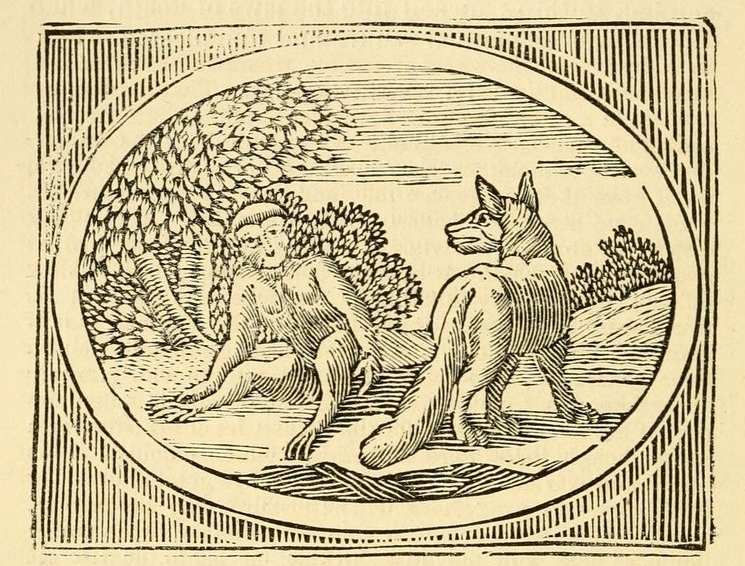3.19 Simia et Vulpis
Vulpem rogavit Simia, ut concederet
Caudae partem aliquam, contegendas ad nates;
Etenim quod usui et honori foret sibi,
Huic esse id oneri. Vulpis at rettulit, nihil
Sibi nimium esse, et cauda humum verri sua
Se malle, quam illa Simiae nates tegi.
Significat haec fabella, raro quidpiam
Superfluum esse diviti, ut egenum juvet.
Here is the poem written out in English prose order to help in reading:
Simia rogavit Vulpem
ut concederet aliquam partem caudae
ad contegendas nates;
etenim id,
quod foret usui et honori sibi (Simiae),
esse oneri huic (Vulpi).
At Vulpis rettulit
nihil nimium esse sibi,
et se malle verri humum sua cauda
quam Simiae nates tegi illa.
Haec fabella significat
raro quidpiam esse superfluum diviti,
ut juvet egenum.
This is a fable which shows up in Perotti's famous Appendix, and so it has featured regularly in editions of Phaedrus since it was discovered by Niccolò Perotti. As the fable also shows up in the Romulus tradition (including a Romulus in verse), that lends credibility to this fable being part of the greater Phaedrus collection. Gudius reconstructed a version from the prose Romulus, and there is also a poem by Osius for this fable. So, I'll have lots more versions of this fable to share as this project takes shape, and those are just the metrical versions, totally aside from prose versions (for example, I used a prose version from Irenaeus in the Mille Fabulae et Una book).
The meter is iambic, and here is some help with the meter (for more about iambic meter, see the post about Desbillons 1.1).
Vulpem · roga·vit Si·mi~ ut · conce·deret
Caudae · part~ ali·quam, con·tegen·das ad · nates;
Etenim · quod u·su~ et ho·nori · foret · sibi,
Huic es·s~ id one·ri. Vul·pis at ret·tulit, · nihil
Sibi ni·mi~ es·s~ et cau·d~ humum · verri · sua
Se mal·le, qu~ il·la Si·miae · nates · tegi.
Signifi·cat haec · fabel·la, ra·ro quid·piam
Super·flu~ es·se di·vit~ ut e·genum · juvet.
You can find illustrations for the fable here. Here's one from a Croxall Aesop, with this text:
The ape, meeting the fox one day, humbly requested him to give him a piece of his fine long brush tail to cover his poor naked backside, which was so exposed to all the violence and inclemency of the weather; “for,” says he, “Reynard, you have already more than you have occasion for, and a great part of it even drags along in the dirt.”
The fox answered, that as to his having too much, that was more than he knew; but, be it as it would, he had rather sweep the ground with his tail as long as he lived, than deprive himself of the least bit to cover the ape's nasty stinking posteriors.

No comments:
Post a Comment
Comments are limited to Google accounts. You can also email me at laurakgibbs@gmail.com or find me at Twitter, @OnlineCrsLady.